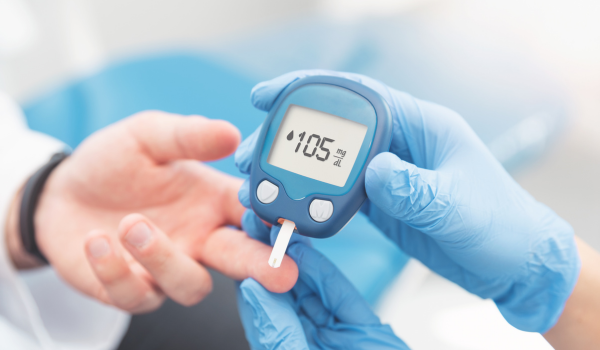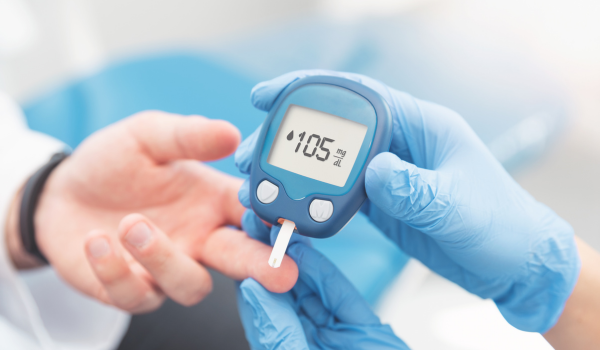
Understanding Gestational Diabetes
Gestational diabetes mellitus (GDM) is a type of diabetes that develops during pregnancy. Unlike type 1 and type 2 diabetes, it usually appears in the second or third trimester when pregnancy hormones interfere with insulin function. These hormones, produced by the placenta, help support the baby’s growth but also make the mother’s body more resistant to insulin.
If the pancreas cannot produce enough insulin to compensate, blood sugar levels rise, leading to gestational diabetes. While the condition often disappears after delivery, it poses serious risks during pregnancy and can have long-term consequences for both mother and child.
Who Is at Risk
Not all pregnant women develop gestational diabetes, but some face a higher likelihood than others. Risk factors include:
-
Age over 25–30 years
-
Overweight or obesity before pregnancy
-
Family history of diabetes or gestational diabetes
-
Previous pregnancy complications such as stillbirth or a baby weighing more than 9 pounds (4 kg)
-
Polycystic ovary syndrome (PCOS)
-
Certain ethnic backgrounds: African American, Hispanic, Native American, South Asian, or Pacific Islander women have higher rates
Recognizing these risk factors helps doctors identify which women need earlier or more frequent testing.
Common Symptoms
Gestational diabetes often develops silently, without obvious symptoms. Many women discover it only through routine prenatal screening. Still, some may notice:
-
Increased thirst (polydipsia)
-
Frequent urination (polyuria)
-
Unusual fatigue
-
Blurred vision
-
Recurrent infections, such as urinary tract or vaginal yeast infections
Since these symptoms are easily mistaken for normal pregnancy changes, screening remains essential for accurate diagnosis.
Screening and Diagnosis
Most women are screened for gestational diabetes between 24 and 28 weeks of pregnancy. Testing methods include:
-
Glucose challenge test: Drinking a sugary solution, followed by a blood test after one hour.
-
Oral glucose tolerance test (OGTT): If the first test is abnormal, a longer test measures blood sugar at fasting, one hour, two hours, and sometimes three hours after consuming glucose.
Early diagnosis ensures that treatment can begin promptly, reducing risks for both mother and baby.
Pregnancy Risks
Uncontrolled gestational diabetes can cause serious complications during pregnancy and delivery:
-
Macrosomia (large baby): Increases risk of birth trauma, cesarean delivery, and shoulder dystocia.
-
Excess amniotic fluid (polyhydramnios): Can lead to premature labor or delivery complications.
-
Preeclampsia: Dangerous high blood pressure and organ stress in the mother.
-
Stillbirth: Higher risk if gestational diabetes remains unmanaged.
Proper blood sugar control significantly reduces these risks.
Impact on the Baby
Babies born to mothers with untreated gestational diabetes face short- and long-term health problems:
-
Hypoglycemia (low blood sugar) shortly after birth due to excess insulin production.
-
Jaundice and breathing difficulties.
-
Obesity and type 2 diabetes later in life.
Maintaining good glucose control during pregnancy helps protect the baby from these complications.
Treatment Options
Gestational diabetes can usually be managed with lifestyle changes, but some women may require medication. Treatment includes:
-
Diet: A balanced plan focusing on whole grains, vegetables, lean protein, and controlled carbohydrates.
-
Exercise: Safe activities such as walking, swimming, or prenatal yoga to improve insulin sensitivity.
-
Monitoring blood sugar: Regular checks help track glucose levels throughout the day.
-
Insulin therapy or oral medications: If lifestyle changes are not enough to keep blood sugar under control.
Close collaboration with healthcare providers ensures both mother and baby remain safe.
Daily Management
Daily routines play a major role in managing gestational diabetes. Helpful strategies include:
-
Eating smaller, more frequent meals to prevent glucose spikes.
-
Avoiding sugary drinks and refined carbohydrates.
-
Keeping healthy snacks like nuts, yogurt, or fruit on hand.
-
Monitoring weight gain according to doctor’s recommendations.
-
Attending regular prenatal visits for monitoring of baby’s growth and mother’s health.
Consistency is key to maintaining stable blood sugar levels.
Delivery and Birth Plans
Women with gestational diabetes may need special delivery planning:
-
If the baby is very large, a cesarean section may be recommended.
-
Labor may be induced earlier if complications arise.
-
Blood sugar must be monitored during labor to prevent complications in both mother and baby.
Despite the risks, many women with well-managed gestational diabetes deliver healthy babies without major issues.
Postpartum Changes
In most cases, gestational diabetes disappears after childbirth. However, women should still:
-
Have blood sugar checked 6–12 weeks postpartum.
-
Continue healthy eating and exercise habits.
-
Be screened regularly for type 2 diabetes, especially if risk factors persist.
Even if blood sugar returns to normal, vigilance remains important.
Long-Term Impact on Mothers
Women who experience gestational diabetes face higher risks later in life, including:
-
Type 2 diabetes: Up to half may develop it within 10 years.
-
Heart disease and metabolic syndrome: Linked to long-term insulin resistance.
-
Recurrence in future pregnancies.
Adopting a healthy lifestyle after pregnancy is one of the most effective ways to lower these risks.
Long-Term Impact on Children
Children born to mothers with gestational diabetes may also face lifelong challenges:
-
Higher likelihood of childhood obesity.
-
Greater risk of developing type 2 diabetes.
-
Potential for metabolic disorders later in adulthood.
Breastfeeding, balanced nutrition, and active lifestyles can help reduce these risks.
Prevention Strategies
While not all cases of gestational diabetes can be prevented, women can lower their risks by:
-
Maintaining a healthy weight before pregnancy.
-
Staying physically active before and during pregnancy.
-
Eating a nutrient-rich, balanced diet.
-
Planning regular checkups and screenings, especially with a family history of diabetes.
Preparation and prevention can make a major difference in outcomes.
Why Awareness Saves Lives
Gestational diabetes does not only affect pregnancy—it can shape long-term health for both mother and child. With proper awareness, early diagnosis, and consistent management, women can reduce risks and ensure healthier futures.
The key message is clear: gestational diabetes is manageable, but only if recognized and treated on time.









